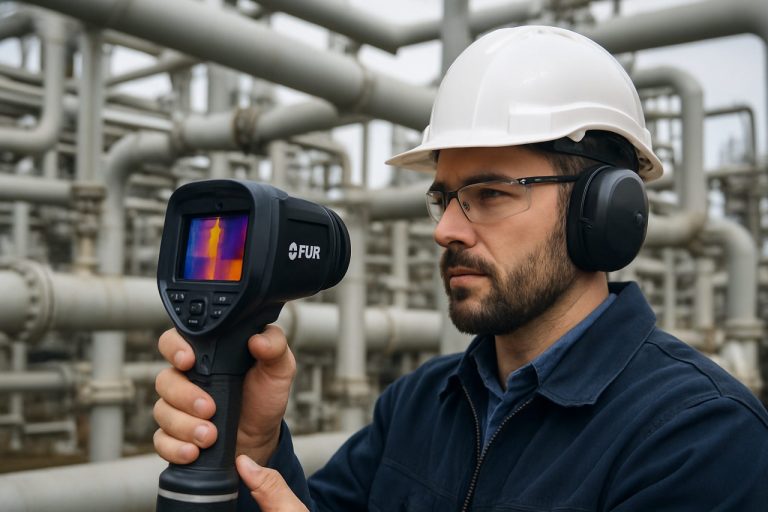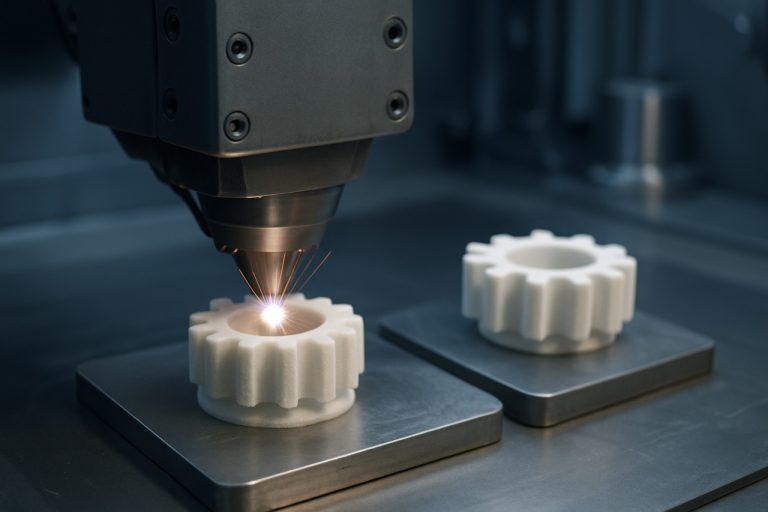
Zirconia-Based Additive Manufacturing in 2025: How Advanced Ceramics Are Shaping the Future of High-Performance Components. Explore the Breakthroughs, Market Dynamics, and Strategic Opportunities Driving the Next Era of Industrial Innovation.
- Executive Summary: Key Trends and Market Outlook (2025–2030)
- Zirconia Ceramics: Properties, Advantages, and Industrial Relevance
- Additive Manufacturing Technologies for Zirconia: Current State and Innovations
- Major Players and Strategic Partnerships (Citing Official Company Sources)
- Market Size, Growth Forecasts, and Regional Hotspots
- Emerging Applications: Medical, Aerospace, Energy, and Beyond
- Supply Chain, Raw Materials, and Sustainability Considerations
- Challenges: Technical Barriers, Cost Factors, and Standardization
- Regulatory Landscape and Industry Standards (Referencing Industry Bodies)
- Future Outlook: Disruptive Trends, R&D Pipelines, and Investment Opportunities
- Sources & References
Executive Summary: Key Trends and Market Outlook (2025–2030)
Zirconia-based additive manufacturing (AM) is poised for significant growth and technological advancement between 2025 and 2030, driven by increasing demand for high-performance ceramics in sectors such as dental, medical, aerospace, and electronics. Zirconia (zirconium dioxide, ZrO₂) is valued for its exceptional mechanical strength, biocompatibility, and resistance to wear and corrosion, making it a preferred material for advanced applications where traditional manufacturing methods face limitations.
Key industry players are expanding their portfolios and production capacities to meet rising demand. 3D Systems and Stratasys have both announced ongoing investments in ceramic AM technologies, with a focus on dental and medical applications. XJet continues to commercialize its NanoParticle Jetting™ technology, enabling the production of highly detailed zirconia parts with superior surface finish and density, targeting both dental prosthetics and industrial components. Lithoz, a specialist in ceramic 3D printing, has expanded its global reach and partnerships, supporting the adoption of zirconia AM in both research and commercial production.
The dental sector remains the largest adopter of zirconia-based AM, with companies such as Dentsply Sirona and Envista Holdings integrating AM workflows for crowns, bridges, and implants. These companies leverage the precision and customization enabled by AM to deliver patient-specific solutions, reducing turnaround times and material waste. In parallel, the medical device industry is exploring zirconia AM for orthopedic implants and surgical tools, capitalizing on the material’s biocompatibility and radiopacity.
Aerospace and electronics manufacturers are also beginning to adopt zirconia AM for components requiring high thermal stability and electrical insulation. GE and Safran have both indicated interest in advanced ceramics for next-generation propulsion and sensor systems, with AM offering design flexibility and rapid prototyping advantages.
Looking ahead to 2030, the outlook for zirconia-based AM is robust. Ongoing R&D is expected to improve process reliability, scalability, and cost-effectiveness, with a focus on multi-material printing and hybrid manufacturing approaches. Industry collaborations and standardization efforts, led by organizations such as ASTM International, are anticipated to accelerate the adoption of zirconia AM in regulated industries. As material and process innovations continue, zirconia-based additive manufacturing is set to become a cornerstone technology for high-value, mission-critical applications across multiple sectors.
Zirconia Ceramics: Properties, Advantages, and Industrial Relevance
Zirconia-based additive manufacturing (AM) is rapidly advancing as a transformative technology in the field of advanced ceramics, offering unique advantages for industries requiring high-performance materials. Zirconia (zirconium dioxide, ZrO₂) is prized for its exceptional mechanical strength, fracture toughness, chemical inertness, and high-temperature stability, making it a material of choice for demanding applications in medical, dental, aerospace, and energy sectors.
As of 2025, the adoption of zirconia-based AM is accelerating, driven by the need for complex geometries, customization, and reduced material waste. Leading manufacturers such as 3D Systems and XJet have developed specialized AM platforms capable of processing technical ceramics, including zirconia. XJet’s NanoParticle Jetting™ technology, for example, enables the production of intricate zirconia parts with high density and fine detail, supporting applications in dental prosthetics and precision engineering. Similarly, 3D Systems offers solutions for ceramic AM, focusing on medical and industrial components where zirconia’s biocompatibility and wear resistance are critical.
In the dental sector, zirconia-based AM is revolutionizing the fabrication of crowns, bridges, and implants. Companies like CeramTec and Ivoclar are leveraging AM to produce patient-specific dental restorations with improved fit and reduced turnaround times. The ability to directly print zirconia components eliminates several steps in traditional subtractive manufacturing, streamlining workflows and minimizing material loss.
Aerospace and energy industries are also exploring zirconia AM for components exposed to extreme environments. The material’s thermal barrier properties and resistance to corrosion make it suitable for turbine blades, fuel cell components, and sensor housings. CeramTec and Tosoh Corporation are among the suppliers providing high-purity zirconia powders tailored for additive processes, ensuring consistent quality and performance.
Looking ahead, the outlook for zirconia-based additive manufacturing is highly promising. Ongoing research focuses on improving the scalability, speed, and cost-effectiveness of AM processes, as well as enhancing the mechanical properties of printed zirconia parts. Industry collaborations and investments in AM infrastructure are expected to further expand the adoption of zirconia ceramics across sectors. As digital manufacturing matures, zirconia-based AM is poised to play a pivotal role in enabling next-generation products that demand both design freedom and superior material performance.
Additive Manufacturing Technologies for Zirconia: Current State and Innovations
Zirconia-based additive manufacturing (AM) has rapidly evolved into a critical technology for producing high-performance ceramic components, particularly in sectors such as dental, medical, and advanced engineering. As of 2025, the field is characterized by a convergence of material science advancements, process optimization, and the scaling of industrial applications.
The most prevalent AM technologies for zirconia include stereolithography (SLA), digital light processing (DLP), and binder jetting. These methods enable the fabrication of complex geometries with high precision and excellent surface finish, which are essential for applications like dental crowns and implants. Companies such as 3D Systems and Stratasys have expanded their portfolios to include ceramic-compatible printers, while specialized manufacturers like Lithoz and XJet focus specifically on advanced ceramic AM, including zirconia.
A significant innovation in recent years is the refinement of photopolymerizable zirconia slurries, which has improved the density and mechanical properties of printed parts. Lithoz, for example, has developed proprietary LCM (Lithography-based Ceramic Manufacturing) technology, enabling the production of dense, high-strength zirconia components suitable for load-bearing applications. Similarly, XJet utilizes its NanoParticle Jetting™ technology to produce parts with fine detail and high density, targeting both dental and industrial markets.
Binder jetting is also gaining traction, with companies like ExOne (now part of Desktop Metal) offering systems capable of processing zirconia powders. This approach is particularly attractive for scaling up production due to its speed and ability to process larger batches, although post-processing steps such as debinding and sintering remain critical for achieving optimal properties.
In the dental sector, the adoption of zirconia AM is accelerating, driven by the demand for patient-specific restorations and the material’s biocompatibility. 3Shape and Dentsply Sirona are integrating AM workflows into digital dentistry, streamlining the design-to-manufacture process for zirconia prosthetics.
Looking ahead, the next few years are expected to bring further improvements in feedstock formulations, process automation, and multi-material printing capabilities. The focus is shifting toward reducing production costs, enhancing throughput, and expanding the range of achievable properties, which will likely drive broader adoption in aerospace, electronics, and biomedical engineering. As leading manufacturers continue to invest in R&D and expand their AM offerings, zirconia-based additive manufacturing is poised for significant growth and diversification through 2025 and beyond.
Major Players and Strategic Partnerships (Citing Official Company Sources)
The zirconia-based additive manufacturing (AM) sector is witnessing significant activity in 2025, with established ceramics producers, AM technology developers, and end-use industries forming strategic alliances to accelerate innovation and commercialization. The field is characterized by a blend of traditional ceramics expertise and advanced digital manufacturing capabilities, with several major players leading the charge.
One of the most prominent companies in this space is 3D Systems, which has expanded its portfolio to include advanced ceramic materials, including zirconia, for dental and industrial applications. The company’s Figure 4 platform supports high-precision ceramic part production, and recent collaborations with dental labs and medical device manufacturers have positioned it as a key supplier of zirconia AM solutions.
Another major player is XJet, an Israeli company specializing in NanoParticle Jetting™ technology. XJet’s Carmel AM systems are capable of producing highly detailed zirconia parts, and the company has announced partnerships with leading dental and industrial ceramics firms to scale up production and expand application areas. XJet’s focus on high-purity, support-free zirconia printing has attracted attention from both medical and electronics sectors.
In Europe, Lithoz GmbH stands out for its LCM (Lithography-based Ceramic Manufacturing) technology, which enables the production of dense, complex zirconia components. Lithoz has established strategic partnerships with global dental and biomedical companies to co-develop next-generation zirconia implants and prosthetics. The company’s collaborations with research institutions and industrial partners are expected to yield new material formulations and process optimizations in the coming years.
On the materials side, Tosoh Corporation is a leading supplier of high-purity zirconia powders, which are critical for achieving the mechanical and aesthetic properties required in AM applications. Tosoh has entered into supply agreements with several AM hardware manufacturers to ensure consistent quality and performance of zirconia feedstocks.
Strategic partnerships are also emerging between AM technology providers and end-users. For example, dental device manufacturers are collaborating with both 3D Systems and Lithoz GmbH to develop custom zirconia dental restorations, leveraging the design freedom and speed of AM. Similarly, electronics and aerospace firms are exploring joint development projects with XJet to produce complex zirconia components for high-performance applications.
Looking ahead, the next few years are expected to see further consolidation and cross-industry partnerships, as companies seek to address challenges related to scalability, cost, and regulatory compliance. The involvement of major ceramics producers, AM technology leaders, and end-use industries signals a robust outlook for zirconia-based additive manufacturing through 2025 and beyond.
Market Size, Growth Forecasts, and Regional Hotspots
Zirconia-based additive manufacturing (AM) is experiencing robust growth, driven by its unique material properties—such as high fracture toughness, biocompatibility, and chemical stability—which make it highly desirable for applications in dental, medical, and advanced engineering sectors. As of 2025, the global market for zirconia AM is still a niche within the broader ceramic 3D printing segment, but it is expanding rapidly due to increasing adoption in high-value industries.
Europe remains a leading regional hotspot, with Germany, Switzerland, and France at the forefront. This is largely due to the presence of established ceramic AM technology providers and a strong base of dental and medical device manufacturers. Companies such as Lithoz GmbH (Austria) and CeramTec (Germany) are recognized for their advanced ceramic 3D printing solutions, including zirconia, and have reported growing demand from both dental labs and industrial clients. Lithoz, for example, has expanded its product portfolio to include high-performance zirconia materials and printers, and has announced collaborations with dental and biomedical partners to accelerate adoption.
Asia-Pacific is emerging as a significant growth region, particularly in China and Japan, where investments in advanced manufacturing and healthcare infrastructure are driving demand for zirconia AM. Chinese manufacturers such as Shining 3D are actively developing ceramic 3D printing platforms and materials, including zirconia, targeting both domestic and international markets. The region benefits from a large base of dental clinics and laboratories, as well as government support for digital manufacturing technologies.
North America, led by the United States, is also witnessing increased activity, with companies like 3D Systems and ExOne (now part of Desktop Metal) offering ceramic AM solutions and materials. The U.S. market is characterized by early adoption in dental prosthetics and medical implants, as well as R&D initiatives in aerospace and electronics.
Looking ahead to the next few years, the zirconia-based AM market is expected to maintain double-digit annual growth rates, fueled by ongoing material innovations, printer advancements, and regulatory approvals for medical applications. The dental sector will remain the largest end-user, but industrial and electronics applications are projected to gain share as process reliability and throughput improve. Regional competition is likely to intensify, with European and Asian players expanding their global reach and North American firms investing in new material formulations and application development.
Emerging Applications: Medical, Aerospace, Energy, and Beyond
Zirconia-based additive manufacturing (AM) is rapidly advancing as a transformative technology across several high-value sectors, notably medical, aerospace, and energy, with significant momentum expected through 2025 and beyond. The unique properties of zirconia ceramics—such as high fracture toughness, chemical inertness, and excellent thermal stability—are driving their adoption in applications where traditional materials fall short.
In the medical field, zirconia’s biocompatibility and aesthetic qualities have long made it a material of choice for dental and orthopedic implants. Additive manufacturing is now enabling the production of highly customized, complex geometries that were previously unattainable with conventional methods. Companies like 3D Systems and XJet are actively developing and commercializing AM solutions for zirconia, with XJet’s NanoParticle Jetting technology allowing for the fabrication of dense, intricate zirconia parts suitable for dental crowns, bridges, and surgical tools. The ability to produce patient-specific implants with improved fit and function is expected to accelerate clinical adoption in 2025, especially as regulatory pathways for AM medical devices become more established.
In aerospace, the demand for lightweight, high-performance components is fueling interest in zirconia-based AM. The material’s resistance to extreme temperatures and wear makes it ideal for applications such as thermal barrier coatings, nozzle components, and sensor housings. CeramTec, a leading technical ceramics manufacturer, is exploring additive manufacturing for advanced ceramic parts, including zirconia, to meet the stringent requirements of aerospace customers. The ability to rapidly prototype and produce small batches of complex parts is particularly valuable for the sector’s low-volume, high-mix production needs.
The energy sector is also poised to benefit from zirconia AM, particularly in solid oxide fuel cells (SOFCs) and high-temperature sensors. Zirconia’s ionic conductivity and stability at elevated temperatures are critical for these applications. Tosoh Corporation, a major supplier of zirconia powders, is supporting the development of AM-compatible materials tailored for energy applications, collaborating with printer manufacturers and research institutions to optimize performance and scalability.
Looking ahead, the outlook for zirconia-based additive manufacturing is robust. Ongoing improvements in feedstock quality, printer resolution, and post-processing techniques are expected to expand the range of viable applications. As more companies invest in dedicated ceramic AM platforms and as industry standards mature, zirconia is set to play a pivotal role in the next generation of high-performance, customized components across medical, aerospace, energy, and emerging fields such as electronics and luxury goods.
Supply Chain, Raw Materials, and Sustainability Considerations
Zirconia-based additive manufacturing (AM) is gaining momentum in 2025, driven by the material’s exceptional mechanical properties, biocompatibility, and chemical stability. The supply chain for zirconia AM is evolving rapidly, with a focus on securing high-purity zirconium oxide powders, optimizing processing routes, and addressing sustainability challenges.
The primary raw material, zirconium oxide (ZrO2), is sourced from zircon sand, predominantly mined in Australia, South Africa, and China. Major global suppliers such as Kenmare Resources and Iluka Resources play a pivotal role in the upstream supply of zircon, which is then refined into zirconia powders suitable for AM. Downstream, companies like Tosoh Corporation and Saint-Gobain are recognized for producing high-purity, stabilized zirconia powders tailored for advanced manufacturing applications, including additive processes.
In 2025, the AM sector is witnessing increased collaboration between powder producers and printer manufacturers to ensure material compatibility and process reliability. For instance, 3DCeram and Lithoz GmbH are notable for their ceramic 3D printing technologies, often working closely with powder suppliers to optimize formulations for binder jetting, stereolithography, and other AM techniques. This integration is crucial for maintaining consistent part quality and minimizing defects, especially in demanding sectors like dental, medical, and aerospace.
Sustainability is an increasing concern in the zirconia AM supply chain. The extraction and processing of zircon sand are energy-intensive and can have significant environmental impacts. Leading suppliers are investing in more efficient mining and refining technologies, as well as recycling initiatives. For example, Iluka Resources has publicized efforts to reduce its carbon footprint and improve resource efficiency across its operations. On the manufacturing side, AM itself offers sustainability advantages by reducing material waste compared to subtractive methods and enabling lightweight, optimized designs that can lower lifecycle emissions.
Looking ahead, the zirconia AM supply chain is expected to become more resilient and sustainable. Companies are exploring closed-loop recycling of zirconia powders and parts, and there is growing interest in digital traceability to ensure responsible sourcing. As demand for high-performance ceramics in AM grows, especially in healthcare and energy, the industry is likely to see further investment in green technologies and transparent supply practices, positioning zirconia-based AM as a key player in the sustainable advanced manufacturing landscape.
Challenges: Technical Barriers, Cost Factors, and Standardization
Zirconia-based additive manufacturing (AM) has emerged as a promising technology for producing high-performance ceramic components, particularly in sectors such as dental, medical, and industrial applications. However, as of 2025, the field faces several significant challenges that impact its broader adoption and industrial scalability.
Technical Barriers: One of the primary technical challenges in zirconia AM is achieving consistent density and mechanical properties comparable to conventionally manufactured ceramics. The layer-by-layer nature of AM processes, such as stereolithography (SLA) and binder jetting, can introduce porosity, microcracks, and anisotropy in the final parts. Achieving full densification often requires post-processing steps like sintering, which can lead to shrinkage and dimensional inaccuracies. Leading manufacturers such as 3D Systems and XJet have developed specialized AM platforms for ceramics, but even these advanced systems require careful optimization of printing parameters and post-processing protocols to ensure reliable part quality.
Another technical barrier is the limited availability of zirconia feedstocks specifically engineered for AM. The rheological properties of ceramic slurries or powders must be tightly controlled to ensure printability and prevent defects. Companies like CeramTec and Tosoh Corporation are actively developing high-purity zirconia materials tailored for additive processes, but widespread standardization is still lacking.
Cost Factors: The cost of zirconia-based AM remains high relative to traditional manufacturing methods. This is due to several factors: the price of high-purity zirconia powders, the need for specialized AM equipment, and the energy-intensive post-processing steps. While companies such as Lithoz have made strides in improving process efficiency, the overall cost per part is still a barrier for many potential users, especially in price-sensitive industries.
Standardization: The lack of standardized testing methods and certification protocols for AM zirconia parts is a critical issue. Industry bodies and manufacturers are working to establish guidelines for material properties, process validation, and part qualification. For example, 3D Systems and CeramTec are involved in collaborative efforts to define standards for ceramic AM, but as of 2025, comprehensive international standards are still in development.
Outlook: Over the next few years, ongoing R&D by leading ceramic AM companies and material suppliers is expected to address many of these challenges. Advances in feedstock formulation, process control, and in-situ monitoring are likely to improve part quality and reduce costs. Furthermore, as industry standards mature, confidence in the reliability and repeatability of zirconia-based AM will grow, paving the way for broader adoption in high-value applications.
Regulatory Landscape and Industry Standards (Referencing Industry Bodies)
The regulatory landscape and industry standards for zirconia-based additive manufacturing (AM) are evolving rapidly as the technology matures and finds broader adoption in sectors such as dental, medical, and advanced engineering. As of 2025, the focus is on ensuring material consistency, process reliability, and biocompatibility, particularly for applications where patient safety and product performance are paramount.
Key industry bodies such as the International Organization for Standardization (ISO) and the ASTM International have been instrumental in developing and updating standards relevant to ceramic AM, including zirconia. ISO/ASTM 52900 provides general terminology for additive manufacturing, while ISO/ASTM 52921 and ISO/ASTM 52910 address design and qualification guidelines. In 2024 and 2025, working groups within these organizations are actively developing more specific standards for ceramic materials, including test methods for mechanical properties, density, and microstructure of additively manufactured zirconia components.
In the dental and medical sectors, regulatory requirements are particularly stringent. The U.S. Food and Drug Administration (FDA) continues to update its guidance for 3D-printed medical devices, emphasizing the need for validated processes and traceability of materials. Zirconia, being a widely used bioceramic, is subject to ISO 13356 for implants, which specifies requirements for yttria-stabilized tetragonal zirconia (Y-TZP) ceramics. Additive manufacturing processes must demonstrate compliance with these standards, and manufacturers are increasingly required to provide detailed documentation of their AM workflows, from powder sourcing to post-processing.
Industry consortia such as Additive Manufacturing UK and the America Makes initiative are fostering collaboration between manufacturers, material suppliers, and regulatory bodies to accelerate the development of best practices and pre-competitive standards for ceramic AM. These organizations are also supporting round-robin testing and interlaboratory studies to benchmark the performance of zirconia AM parts.
Looking ahead, the next few years are expected to see the publication of more granular standards specific to zirconia-based AM, covering aspects such as powder characterization, layer-wise quality assurance, and in-situ monitoring. The harmonization of international standards will be crucial for global market access, especially as leading manufacturers such as 3D Systems and XJet expand their zirconia AM offerings. The regulatory environment is thus poised to become more robust, supporting the safe and reliable adoption of zirconia-based additive manufacturing across critical industries.
Future Outlook: Disruptive Trends, R&D Pipelines, and Investment Opportunities
Zirconia-based additive manufacturing (AM) is poised for significant advancements in 2025 and the coming years, driven by ongoing R&D, disruptive trends, and increasing investment from both established industry leaders and innovative startups. The unique properties of zirconia—such as high fracture toughness, chemical inertness, and biocompatibility—continue to make it a material of choice for demanding applications in dental, medical, and industrial sectors.
A key trend is the rapid maturation of binder jetting and stereolithography (SLA) processes tailored for zirconia. Companies like 3D Systems and Stratasys are expanding their ceramic AM portfolios, with a focus on improving density, surface finish, and mechanical properties of printed zirconia parts. Meanwhile, Lithoz GmbH—a pioneer in ceramic 3D printing—continues to refine its LCM (Lithography-based Ceramic Manufacturing) technology, enabling the production of highly complex zirconia components with near-theoretical density and fine feature resolution.
In the dental sector, the adoption of zirconia AM is accelerating, with companies such as CeramTec and Ivoclar investing in digital workflows that integrate zirconia 3D printing for crowns, bridges, and implant abutments. These efforts are supported by the growing availability of medical-grade zirconia powders and validated printing parameters, which are expected to further reduce lead times and costs for custom dental prosthetics.
On the R&D front, collaborations between industry and academia are intensifying. For example, Tosoh Corporation, a major supplier of zirconia powders, is working with AM hardware manufacturers to optimize material formulations for improved printability and sintering behavior. Additionally, research into multi-material and functionally graded zirconia structures is gaining momentum, with the aim of unlocking new applications in electronics, energy, and wear-resistant components.
Investment activity is robust, with both public and private funding flowing into zirconia AM startups and scale-ups. The European Union and national governments are supporting initiatives to develop next-generation ceramic AM technologies, recognizing their potential to enhance manufacturing competitiveness and sustainability. Strategic partnerships and acquisitions are also on the rise, as established players seek to secure access to proprietary processes and intellectual property.
Looking ahead, the outlook for zirconia-based additive manufacturing is highly promising. As process reliability improves and material costs decrease, broader adoption is anticipated across aerospace, automotive, and healthcare industries. The next few years are likely to see the emergence of new business models—such as distributed manufacturing and on-demand production—enabled by the unique capabilities of zirconia AM.
Sources & References
- 3D Systems
- Stratasys
- XJet
- Lithoz
- Dentsply Sirona
- Envista Holdings
- GE
- ASTM International
- CeramTec
- Ivoclar
- ExOne
- 3Shape
- Shining 3D
- 3DCeram
- International Organization for Standardization



